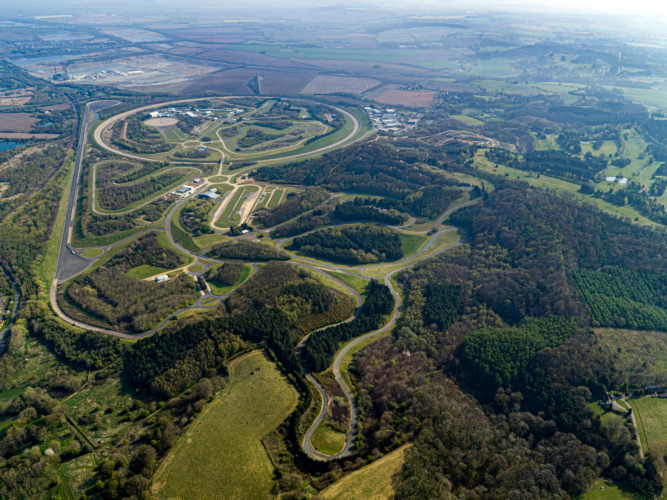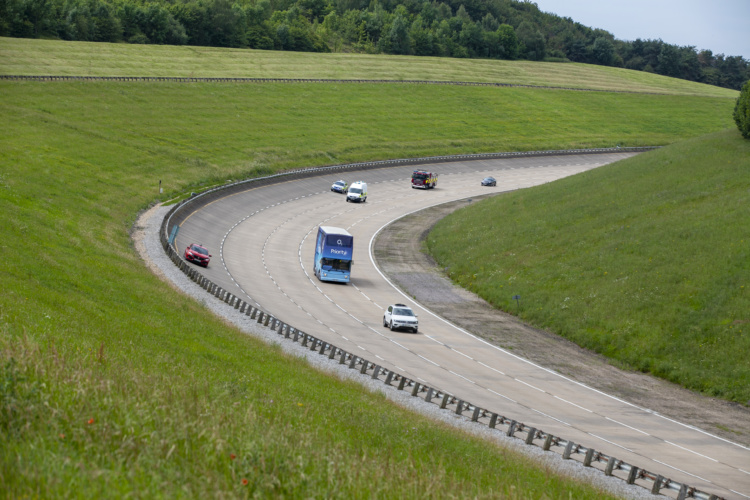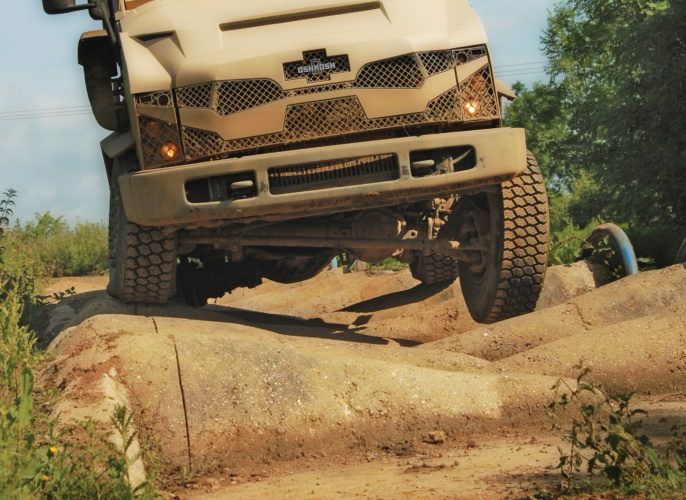
In this series of guest blogs by my colleagues at UTAC CERAM Millbrook, we have looked closely at a range of new and future technologies, to help automotive engineers keep pace with consumer and legislative demands.
In a world of intelligent simulation technology and highly advanced climatic chambers, it would be easy to think that physical test tracks will soon be a thing of the past. The reality couldn’t be further from the truth.
CLICK HERE FOR MORE BLOGS IN THIS SERIES
It has been more than half a century since our Bedfordshire site opened its 70km of test tracks. Its mix of high-speed and dynamic handling tracks, as well as city-like low-speed ‘real-world’ simulation environments makes the facility’s tracks just as vital to customer development programmes as the plethora of dynamometers and simulation rigs. The same can be said for our test tracks in Mortefontaine and Linas-Monthléry, France, as well as our indoor and outdoor winter test facility in Northern Finland.
The beauty of track testing is that there are so many different types of track, built to replicate almost any type of real-world environment or situation. Across our sites, we have the capability to test a vehicle in almost any scenario, allowing our customers to integrate track work throughout their development programmes.
Being able to put a vehicle onto a physical track to validate a theory or a development path that you might be exploring in the laboratory or simulator is invaluable. It is also the case that much of the testing needed to achieve type approval requires the vehicle to run on a track, usually tailored to specific technical regulations.
So, what types of tracks does UTAC CERAM Millbrook have, and how do engineers use these to develop new vehicles and components? Below are some of the latest track developments.
5G-enabled Test Tracks
Millbrook Proving Ground was the first site in the UK to install a 5G network specifically for automotive development and testing. With a network that covers and operates across the full proving ground, including our High-Speed Circuit, Hill Route and City Course, the 5G network was recently upgraded to make it the densest private 5G stand-alone network in Europe.

Our 5G network allows an ultra-low latency transfer of data to and from a test vehicle, meaning that engineers can review test data in real time, enabling our track testing to be more efficient than ever.
We also have a test centre in France which is dedicated to testing connected and autonomous vehicles (TEQMO). This is based at the historic Linas-Montlhéry Autodrome and includes 12km of test tracks, platforms, junctions and soft targets, alongside several laboratories.
Off-Road Tracks
Our most varied, and arguably most exciting, tracks include our off-road circuit which used for a range of vehicles, from soft-roaders to military vehicles. These tracks include extremely steep gravel and sand hills, severe twists, wading ponds and ditches, to name a few.

Home of the UK’s battlefield Mission, Millbrook Proving Ground is well utilised by the armed forces in determining performance and durability of its vehicles. In fact, the MOD’s Technology Demonstrator 6 (TD6) project, which aims to determine the benefits that hybrid vehicles may bring to today’s battlefield mission, is being heavily supported by UTAC CERAM Millbrook.
Snow and Ice Testing All Year Round
When developing a vehicle, powertrain or component, a crucial part of the programme often involves exposing the product to extremely cold temperatures. In recent years, the advancement of climatic test chambers has meant that it is often easier, quicker and more cost-effective to create these temperatures in laboratory conditions.
One area where real world cold weather testing is still vital, however, is in developing tyres. We all know how crucial it is that a vehicle’s tyres can perform on ice and snow. Based in Ivalo, on the edge of the Arctic Circle in Finland, our winter testing facility has both indoor and outdoor tracks, allowing engineers to test tyres on snow, ice, wet and dry surfaces all year round.

New Test Centre in Morocco
At the other end of the thermometer, is UTAC CERAM Millbrook’s latest test centre in Oued Zem, 150km from Casablanca in Morocco. In a similar way to Test World, part of the reason for choosing to build this new facility in North Africa is reliable weather conditions, making testing more repeatable.
The Oued Zem facility will feature a 4km track that is unique to Europe and Africa, and will be certified for use in type approval testing. We are looking forward to this facility opening later this year.
So you can see that with ongoing investment and development, the physical test tracks for which UTAC CERAM Millbrook first built its reputation have a long future ahead of them, as a crucial element to the future vehicle development ecosystem.




AI-generated medical responses need monitoring, study finds
This would negate most of the benefit of using AI in the first place, rather like the Locomotive Act 1865 that required any self-propelled road...